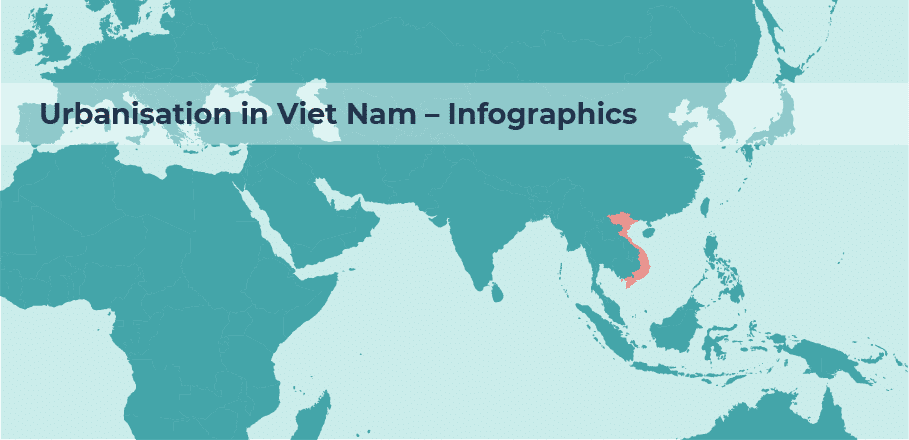Infographics: Urbanisation and Urban Development in Viet Nam
URBANET’s latest infographic series with interesting facts and figures about urbanisation and urban development in Viet Nam.
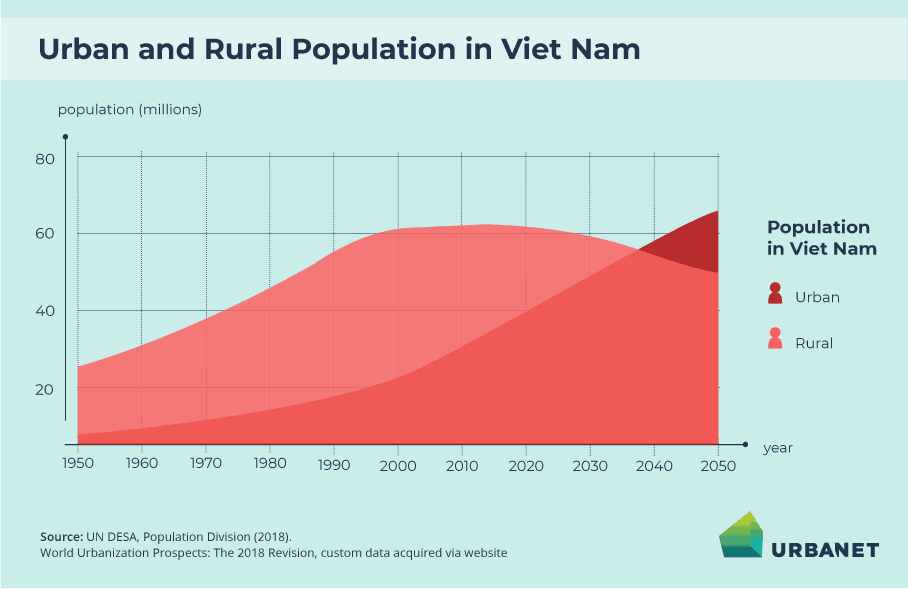
Urbanisation in Viet Nam – Urban and Rural Population in Viet Nam | Viet Nam Infographics © GIZ
The graphic displays the steady growth of Viet Nam’s urban population since 1950. The growth of the rural population stagnated in the early 2000s and is projected to decrease over the next decades. Prospects suggest that by 2040 more people will live in urban than in rural areas.
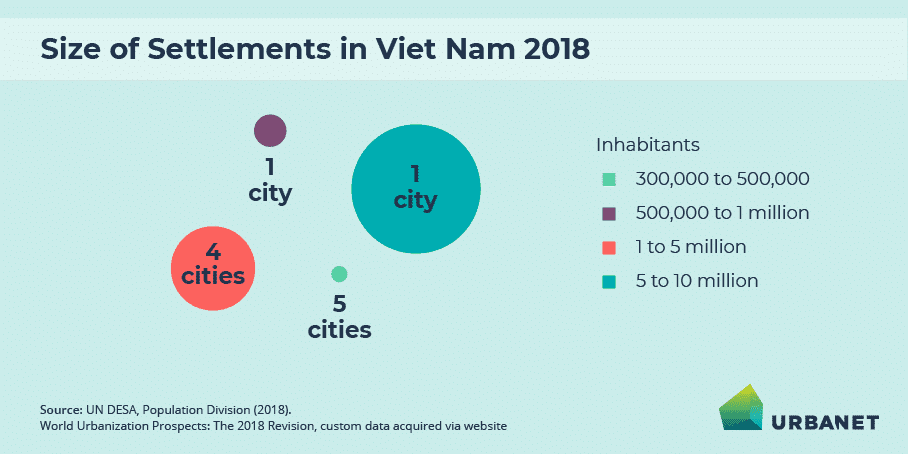
Urbanisation in Viet Nam – Size of Settlements in Viet Nam | Viet Nam Infographics © GIZ
Viet Nam has a number of medium to large cities: in 2018, five cities had 300,000 to 500,000 inhabitants, one city had between 500,000 and 1 million residents, and four cities had 1 to 5 million inhabitants. Only one city is a megacity with more than 5 million inhabitants.
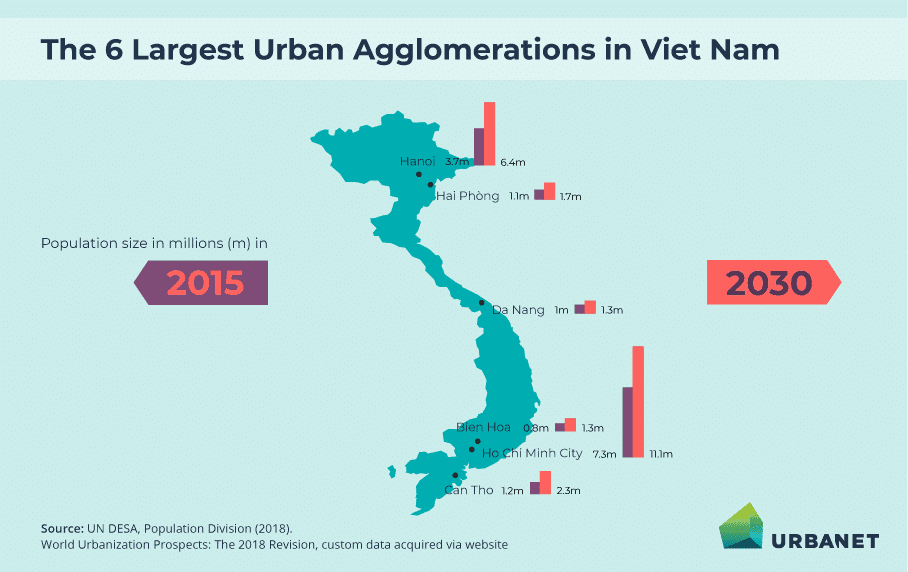
Urbanisation in Viet Nam – Largest cities in Viet Nam | Viet Nam Infographics © GIZ
The six largest cities in Viet Nam will become considerably bigger by 2030. Prospects suggest that the population of Ho Chi Minh City will increase by almost 4 million to reach 11.1 million people over the next decade. Capital and second largest city Hanoi is projected to increase by 2.7 million to reach 6.4 million inhabitants.
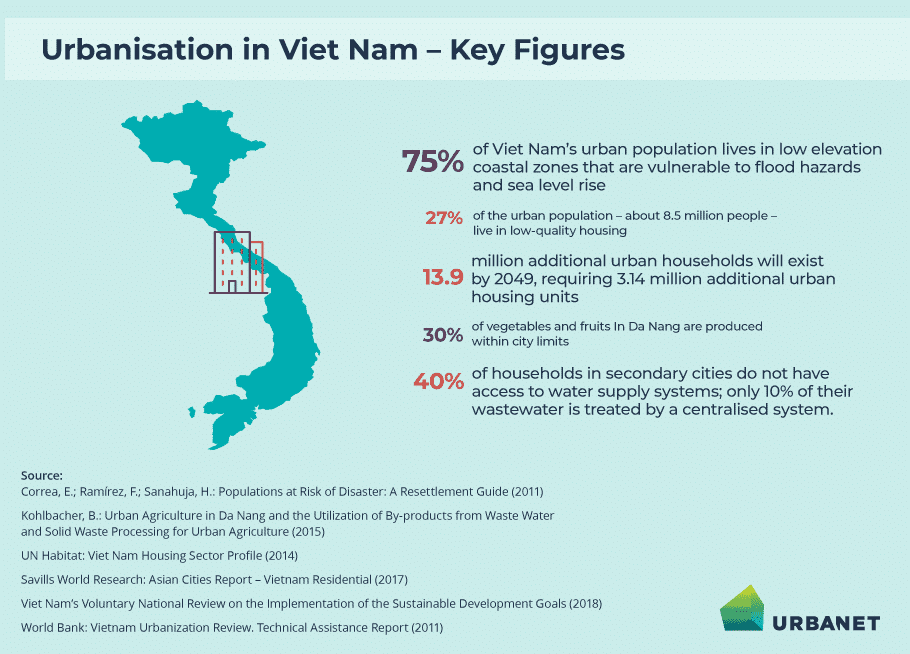
Urbanisation in Viet Nam – Key Figures | Viet Nam Infographics © GIZ
Housing is a key factor in Viet Nam’s urbanisation: Already, 27 per cent of the urban population live in low-quality housing. With 13.9 million additional urban households by 2049, this problem will intensify. Considering that 75 per cent of the urban population live in areas that are vulnerable to rising sea levels, climate change not only is expected to significantly affect the country’s urbanisation process but also urgently calls for effective and socially just urban resilience strategies. 40 per cent of households in secondary cities are not connected to water supply systems and as little as 10 per cent of their wastewater gets treated by centralised systems.
